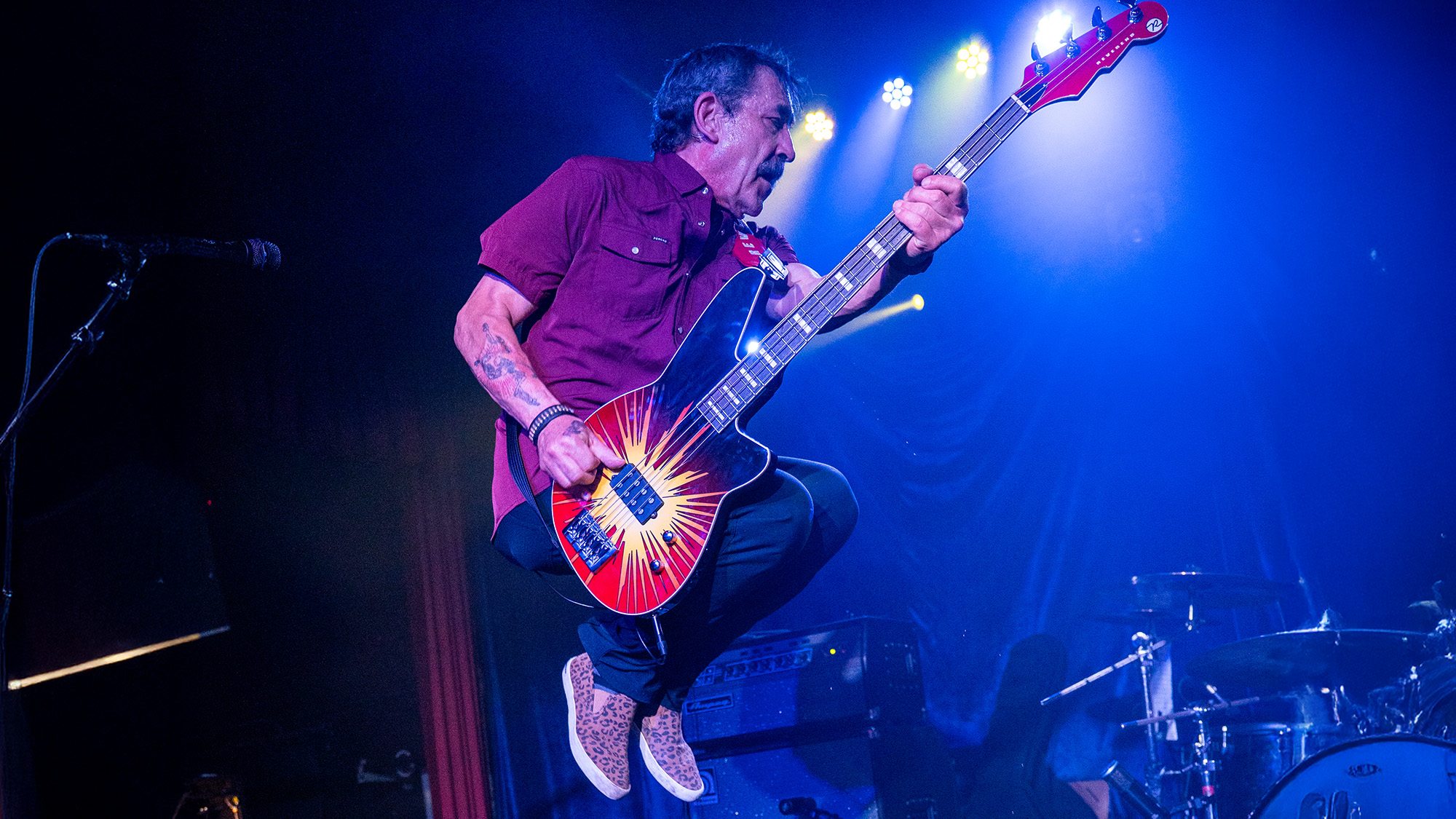“Everywhere I go someone knows my name because of that bass solo. It’s not like with Michael Jackson – I don’t get mobbed – but I am famous”: How Willie Weeks' unbelievable solo on Donny Hathaway's 1972 Live album made him a bass legend
After being introduced as “the baddest bass player in the country,” Willie Weeks kicked off his now iconic solo

In the finale of Donny Hathaway's classic 1972 Live album, Willie Weeks – playing a flatwound-strung '62 Fender P-Bass through an Ampeg SVT – takes a three-and-a-half-minute solo that is a seamless melding of groove, melody, and drama, making it one of the deepest bass solos on record.
“Everywhere I go somebody knows my name because of that bass solo,” Weeks told Bass Player. “It's not like with Michael Jackson – I don't get mobbed – but I am famous, and I like it.
“It's as incredible as that night Donny said, ‘On bass, ladies and gentlemen, the baddest bass player in the country – Willie Weeks, y’all!’ I'm like, ‘Oh, my God! What did he say? What am I going to do?’ I thought, I'd better build slow!”
Born in Salemburg, North Carolina, Weeks grew up listening to country, pop, and R&B on the radio. At age 12 he started singing and then playing guitar in a gospel group – learning on a homemade axe strung with fishing line – and when the group began performing alongside big-time acts, he got his first glimpse of a bass guitar. “It was a Fender Precision. I said, ‘Man, that's it!’”
Weeks went on to hone his bass skills in the early ’60s in a variety of bands and locations, from Alvin Cash & the Crawlers in Buffalo, New York, to Les Watson & the Panthers in Dallas, Texas. In St. Paul, Minnesota, it was the Fabulous Amazers and prog-rockers Gypsy, whose self-titled 1970 album with Weeks on bass has become a cult item.
Having found his '62 P-Bass at a California pawnshop, Weeks eventually headed to Chicago, where he played with a pre-Chaka Khan lineup of the band Rufus before joining up with soul star Donny Hathaway.

The now legendary 13-minute rendition of Voices Inside (Everything Is Everything) on Hathaway's Live album gave each band member a chance to shine, and by the time Weeks’ solo rolls around at the 8:35 mark, he'd had plenty of time to warm up on the song's main groove.
All the latest guitar news, interviews, lessons, reviews, deals and more, direct to your inbox!
After being introduced as “the baddest bass player in the country,” Weeks kicks off his solo with simple root-5 quarter-notes, which he gradually displaces rhythmically. He then introduces the 3rd (G#), and the C# as he begins to broaden the tone palette even more. He then changes direction and begins to explore the E7 chord's 7th, D.
It’s not long before Weeks throws down the full blues gauntlet, adding a phrase that starts on the Bb – the classic b5 ‘blue note.’
Check out the way Weeks fashions the bluesy run in the last two bars of the section into his next idea: high G#'s with the E string ringing. He then returns to his main lick before suddenly initiating a new device one bar later.
The solo's gradual ascent up the neck reaches its highest point as Weeks repeats a funky and syncopated phrase, before exploring double-stop chord inversions, engaging in a whimsical call-and-response between upper and lower registers.
A trick for playing these sextuplet figures smoothly is to not alternate your plucking fingers: Use your index finger to pluck the first 16th-note sextuplet, and your middle finger to pluck both the second and third sextuplets in the grouping. Repeat that plucking pattern for the rest of the figure.
Unleashing a barrage of continuous 16th-note sextuplets, Weeks climbs up the E7 scale (E Mixolydian, or the A major scale from the 5th degree) diatonically, save the D-Eb-E chromatic movement at 11:14.
At this point, his right hand kicks into overdrive, playing a tremolo between Eb and G on beat three and E natural and G# on beat four.

This can be seen as the solo's peak, before Weeks starts to come down the mountain; he uses more space between his double-stop flourishes, and his fills move in a downward direction and begin to resemble conventional basslines.
Finally, Weeks returns to groove mode with a propulsive part that subtly hints at stride piano and James Jamerson (think the opening of I Was Made to Love Her). Hathaway can be heard enthusing, “That feels pretty good, y’all!”
Weeks issues some melodic variations on the line, before firmly landing back in the bass role – to well-earned screams and applause. A classic is born!
Chris Jisi was Contributing Editor, Senior Contributing Editor, and Editor In Chief on Bass Player 1989-2018. He is the author of Brave New Bass, a compilation of interviews with bass players like Marcus Miller, Flea, Will Lee, Tony Levin, Jeff Berlin, Les Claypool and more, and The Fretless Bass, with insight from over 25 masters including Tony Levin, Marcus Miller, Gary Willis, Richard Bona, Jimmy Haslip, and Percy Jones.


